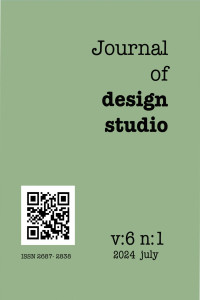Abstract
References
- Akponeware, A. O., & Adamu, Z. A. (2017). Clash Detection or Clash Avoidance? An Investigation into Coordination Problems in 3D BIM. Buildings, 7, 75.
- Allen, R. K., Becerik, B., Pollalis, S. N., & Schwegler, R. (2005). Promise and Barriers to Technology Enabled and Open Project Team Collaboration. Journal of Professional Issues in Engineering Education and Practice, 131(4), 301-311.
- Asadi, R., Rotimi, J. O., & Wilkinson, S. (2023). Analyzing Underlying Factors of Rework in Generating Contractual Claims in Construction Projects. Journal of Construction Engineering, 149(6), 04023036.
- Assaf, S., Hassanain, M. A., & Abdallah, A. (2018). Review and assessment of the causes of deficiencies in design documents for large construction projects. International Journal of Building Pathology and Adaptation, 36(3), 300-317.
- Bachman, L. R. (2003). Integrated Buildings: The Systems Basis of Architecture. New Jersey: John Wiley & Sons.
- Bakar, R. A., Atta Idrawani bin Zaini, Siti Syariazulfa binti Kamaruddin, & Yazit, R. N. (2023). Students’ Perceptions towards Assignment tion between Architecture Design Studio and Structural and Technological Subjects. International Journal of Service Management and Sustainability, 8(1), 191-208.
- Burati Jr., J. L., Farrington, J. J., & Ledbetter, W. B. (1992). Causes of Quality Deviations in Design and Construction. Journal of Construction Engineering and Management, 118(1), 34-49.
- Edis, E. (2016). Learning building subsystems' interactions and environmental sustainability by doing - A discussion on the outputs of a design studio. International Conference on Integrated Design - Building Our Future, (pp. 19-30). Bath.
- Gross, M. D. (1994). Avoiding Conflicts in Architectural Subsystem Layout. Concurrent Engineering Research and Applications, 2(3), pp. 163-171.
- Hartkopf, V., Loftness, V. E., & Mill, P. A. (1986). Integration for performance. In R. D. Rush (Ed.), The Building Systems Integration Handbook (pp. 231-316). The American Institute of Architects - John Wiley & Sons.
- Hu, Y., Castro-Lacouturea, D., & Eastman, C. M. (2019). Holistic clash detection improvement using a component dependent network in BIM projects. Automation in Construction, 105, 102832.
- ISO. (2016). ISO 19208 Framework for specifying performance in buildings. Geneva: International Standardization Organization - ISO.
- Jafari, K. G., Sharyatpanahi, N. S., & Noorzai, E. (2021). BIM-based integrated solution for analysis and management of mismatches during construction. Journal of Engineering, Design and Technology, 19(1), 81-102.
- Love, P. E., & Li, H. (2000). Quantifying the causes and costs of rework in construction. Construction Management & Economics, 18(4), 479-490.
- Lutz, J. D., Hancher, D. E., & East, E. W. (1990). Framework for Design-Quality-Review Data-Base System. Journal of Management in Engineering, 6(3), 296-312.
- Merschbrock, C., & Munkvold, B. E. (2015). Effective digital collaboration in the construction industry – A case study of BIM deployment in a hospital construction project. Computers in Industry, 73, 1-7.
- Metin, B. (2023). Multilayered and Interacting Course Design Approach in Architecture Education: A Case of Building and Construction Technology Courses and Studios. Journal of Design Studio, 5(1), 145-174.
- NAAB. (2019). 2019 Conditions for NAAB International Certification. Retrieved from National Architectural Accrediting Board: https://www.naab.org/wp-content/uploads/2019-Conditions-for-NAAB-International-Certification.pdf
- Rich, P., & Dean, Y. (2015). Principles of Element Design (3rd ed.). New York: Routledge.
- Rush, R. D., & Stubbs, S. (1986). Integration Theory. In R. D. Rush (Ed.), The Building Systems Integration Handbook (pp. 317-409). American Institute of Architects - John Wiley & Sons Inc.
- Staub-French, S., & Khanzode, A. (2007, July). 3D and 4D modeling for design and construction coordination: issues and lessons learned. ITcon, 12, pp. 381-407.
- Tommelein, I. D., & Gholami, S. (2012). Root Causes of Clashes in Building Information Models. Proceedings for the 20th Annual Conference of the International Group for Lean Construction. San Diego, USA.
- Uihlein, M. S. (2013). Integration in the Classroom: Structural Planning and Design. Architectural Engineering Conference. Pennsylvania, United States: American Society of Civil Engineers.
- Ünay, A. I., & Özmen, C. (2006). Building Structure Design as an Integral Part of Architecture: A Teaching Model for Students of Architecture. International Journal of Technology and Design Education, 16, 253–271.
- Wang, J., Wang, X., Shou, W., Chong, H.-Y., & Guo, J. (2016). Building information modeling-based integration of MEP layout designs and constructability. Automation in Construction, 61, 134–146.
- Ye, G., Jin, Z., Xia, B., & Skitmore, M. (2015). Analyzing Causes for Reworks in Construction Projects in China. Journal of Management in Engineering, 31(6), 04014097.
Constructional Designs of Architecture Students – Were Building Subsystems Successfully Integrated During the Project Process?
Abstract
Integration problems between building subsystems designed by different specialists may arise when not properly coordinated. Alongside their design duties, architects often have control/coordination responsibility to avoid these. Gaining experience in integrating building subsystems is an objective of the Construction Project course in the Istanbul Technical University Bachelor of Architecture Program. Final submissions of the author-led groups were evaluated to determine design deficiencies and integration problems observed and to discuss students’ performance in subsystem integration. Using a classification framework generated for determining the types of subsystem integration, design deficiencies and integration problems based on literature, 20 student projects were reviewed in this respect. Drawings of each project for the architectural, structural, heating and plumbing systems were assessed within themselves and in pairs to find inconsistencies. Regarding the integration problems identified, opinions of a few professionals on their significance in causing rework were taken via a questionnaire to assist the discussions. Students’ performance was assessed using both quantitative findings regarding the number and type of design deficiencies and integration problems identified and professionals’ opinions. In total, 12 design deficiencies and 20 integration problems were identified. Among the deficiencies, the occurrence rate of errors was higher than that of the omissions (i.e. 61% and 39.2% respectively). Among the integration problems, the structural system was always a component of the subsystem pairs with a high occurrence rate of problems (i.e. >50%). Regarding different types of integration problems, omission was the least commonly observed problem followed by error, and soft and hard clashes respectively.
Keywords
Building fabric Technical design System integration Architecture education Design deficiency Clash detection
Ethical Statement
N/A
Supporting Institution
-
Thanks
The author thanks the students for their enthusiasm and hard work during the term. Their drawings are not credited in the paper either by name or by code as the paper focuses on mistakes and it will shadow the fact that mistakes in each project were much fewer than the correct issues.
References
- Akponeware, A. O., & Adamu, Z. A. (2017). Clash Detection or Clash Avoidance? An Investigation into Coordination Problems in 3D BIM. Buildings, 7, 75.
- Allen, R. K., Becerik, B., Pollalis, S. N., & Schwegler, R. (2005). Promise and Barriers to Technology Enabled and Open Project Team Collaboration. Journal of Professional Issues in Engineering Education and Practice, 131(4), 301-311.
- Asadi, R., Rotimi, J. O., & Wilkinson, S. (2023). Analyzing Underlying Factors of Rework in Generating Contractual Claims in Construction Projects. Journal of Construction Engineering, 149(6), 04023036.
- Assaf, S., Hassanain, M. A., & Abdallah, A. (2018). Review and assessment of the causes of deficiencies in design documents for large construction projects. International Journal of Building Pathology and Adaptation, 36(3), 300-317.
- Bachman, L. R. (2003). Integrated Buildings: The Systems Basis of Architecture. New Jersey: John Wiley & Sons.
- Bakar, R. A., Atta Idrawani bin Zaini, Siti Syariazulfa binti Kamaruddin, & Yazit, R. N. (2023). Students’ Perceptions towards Assignment tion between Architecture Design Studio and Structural and Technological Subjects. International Journal of Service Management and Sustainability, 8(1), 191-208.
- Burati Jr., J. L., Farrington, J. J., & Ledbetter, W. B. (1992). Causes of Quality Deviations in Design and Construction. Journal of Construction Engineering and Management, 118(1), 34-49.
- Edis, E. (2016). Learning building subsystems' interactions and environmental sustainability by doing - A discussion on the outputs of a design studio. International Conference on Integrated Design - Building Our Future, (pp. 19-30). Bath.
- Gross, M. D. (1994). Avoiding Conflicts in Architectural Subsystem Layout. Concurrent Engineering Research and Applications, 2(3), pp. 163-171.
- Hartkopf, V., Loftness, V. E., & Mill, P. A. (1986). Integration for performance. In R. D. Rush (Ed.), The Building Systems Integration Handbook (pp. 231-316). The American Institute of Architects - John Wiley & Sons.
- Hu, Y., Castro-Lacouturea, D., & Eastman, C. M. (2019). Holistic clash detection improvement using a component dependent network in BIM projects. Automation in Construction, 105, 102832.
- ISO. (2016). ISO 19208 Framework for specifying performance in buildings. Geneva: International Standardization Organization - ISO.
- Jafari, K. G., Sharyatpanahi, N. S., & Noorzai, E. (2021). BIM-based integrated solution for analysis and management of mismatches during construction. Journal of Engineering, Design and Technology, 19(1), 81-102.
- Love, P. E., & Li, H. (2000). Quantifying the causes and costs of rework in construction. Construction Management & Economics, 18(4), 479-490.
- Lutz, J. D., Hancher, D. E., & East, E. W. (1990). Framework for Design-Quality-Review Data-Base System. Journal of Management in Engineering, 6(3), 296-312.
- Merschbrock, C., & Munkvold, B. E. (2015). Effective digital collaboration in the construction industry – A case study of BIM deployment in a hospital construction project. Computers in Industry, 73, 1-7.
- Metin, B. (2023). Multilayered and Interacting Course Design Approach in Architecture Education: A Case of Building and Construction Technology Courses and Studios. Journal of Design Studio, 5(1), 145-174.
- NAAB. (2019). 2019 Conditions for NAAB International Certification. Retrieved from National Architectural Accrediting Board: https://www.naab.org/wp-content/uploads/2019-Conditions-for-NAAB-International-Certification.pdf
- Rich, P., & Dean, Y. (2015). Principles of Element Design (3rd ed.). New York: Routledge.
- Rush, R. D., & Stubbs, S. (1986). Integration Theory. In R. D. Rush (Ed.), The Building Systems Integration Handbook (pp. 317-409). American Institute of Architects - John Wiley & Sons Inc.
- Staub-French, S., & Khanzode, A. (2007, July). 3D and 4D modeling for design and construction coordination: issues and lessons learned. ITcon, 12, pp. 381-407.
- Tommelein, I. D., & Gholami, S. (2012). Root Causes of Clashes in Building Information Models. Proceedings for the 20th Annual Conference of the International Group for Lean Construction. San Diego, USA.
- Uihlein, M. S. (2013). Integration in the Classroom: Structural Planning and Design. Architectural Engineering Conference. Pennsylvania, United States: American Society of Civil Engineers.
- Ünay, A. I., & Özmen, C. (2006). Building Structure Design as an Integral Part of Architecture: A Teaching Model for Students of Architecture. International Journal of Technology and Design Education, 16, 253–271.
- Wang, J., Wang, X., Shou, W., Chong, H.-Y., & Guo, J. (2016). Building information modeling-based integration of MEP layout designs and constructability. Automation in Construction, 61, 134–146.
- Ye, G., Jin, Z., Xia, B., & Skitmore, M. (2015). Analyzing Causes for Reworks in Construction Projects in China. Journal of Management in Engineering, 31(6), 04014097.
Details
| Primary Language | English |
|---|---|
| Subjects | Architecture (Other) |
| Journal Section | Research Articles |
| Authors | |
| Early Pub Date | July 16, 2024 |
| Publication Date | July 20, 2024 |
| Submission Date | March 17, 2024 |
| Acceptance Date | June 16, 2024 |
| Published in Issue | Year 2024 Volume: 6 Issue: 1 |
This work is licensed under a Creative Commons Attribution 4.0 International License.
The articles published in Journal of Design Studio had been similarity checked by intihal.net

CALL FOR ARTICLES
Journal of Design Studio call for research papers on studios in all disciplines. Please submit your article by using Dergipark online submission system.



